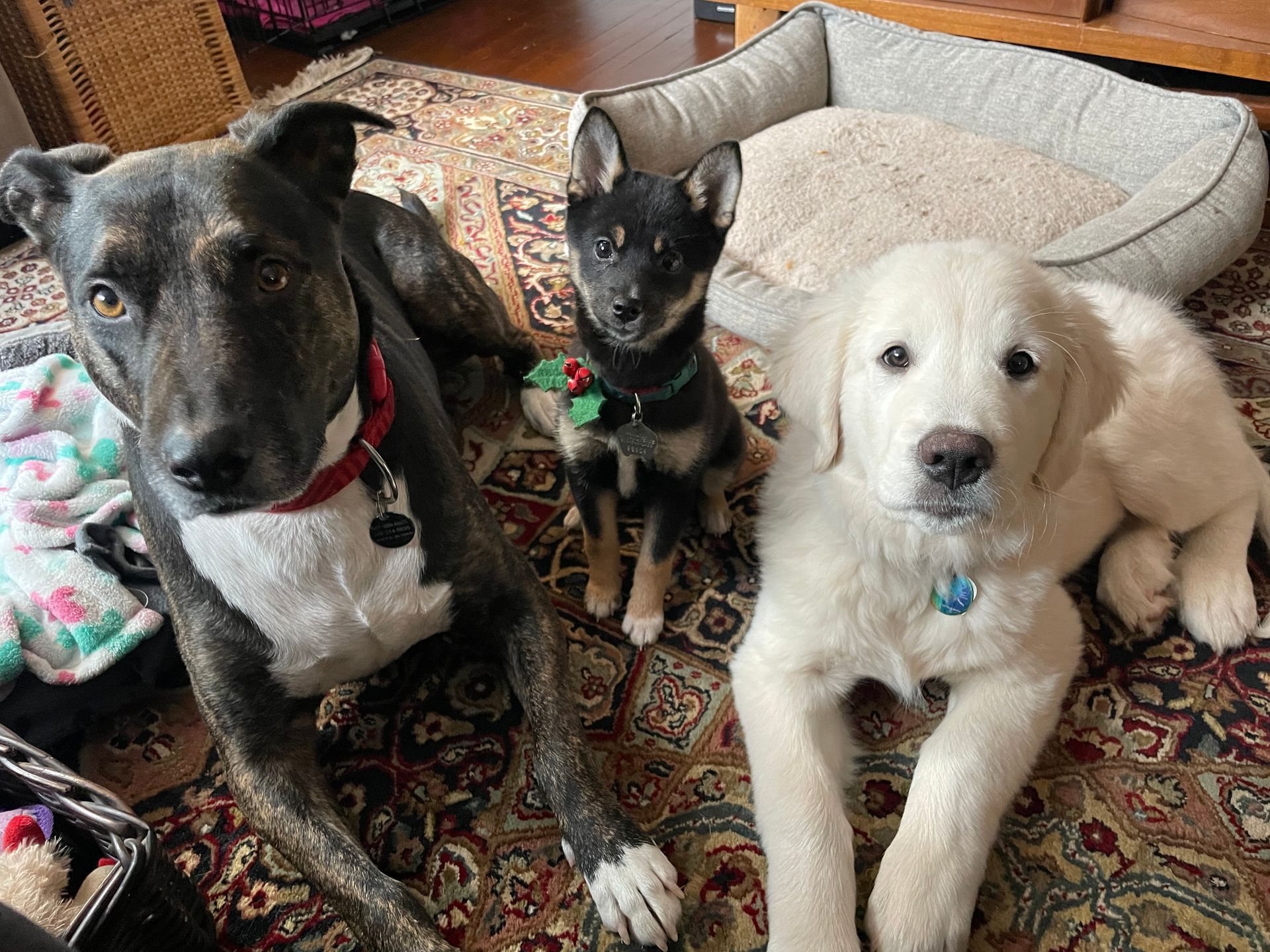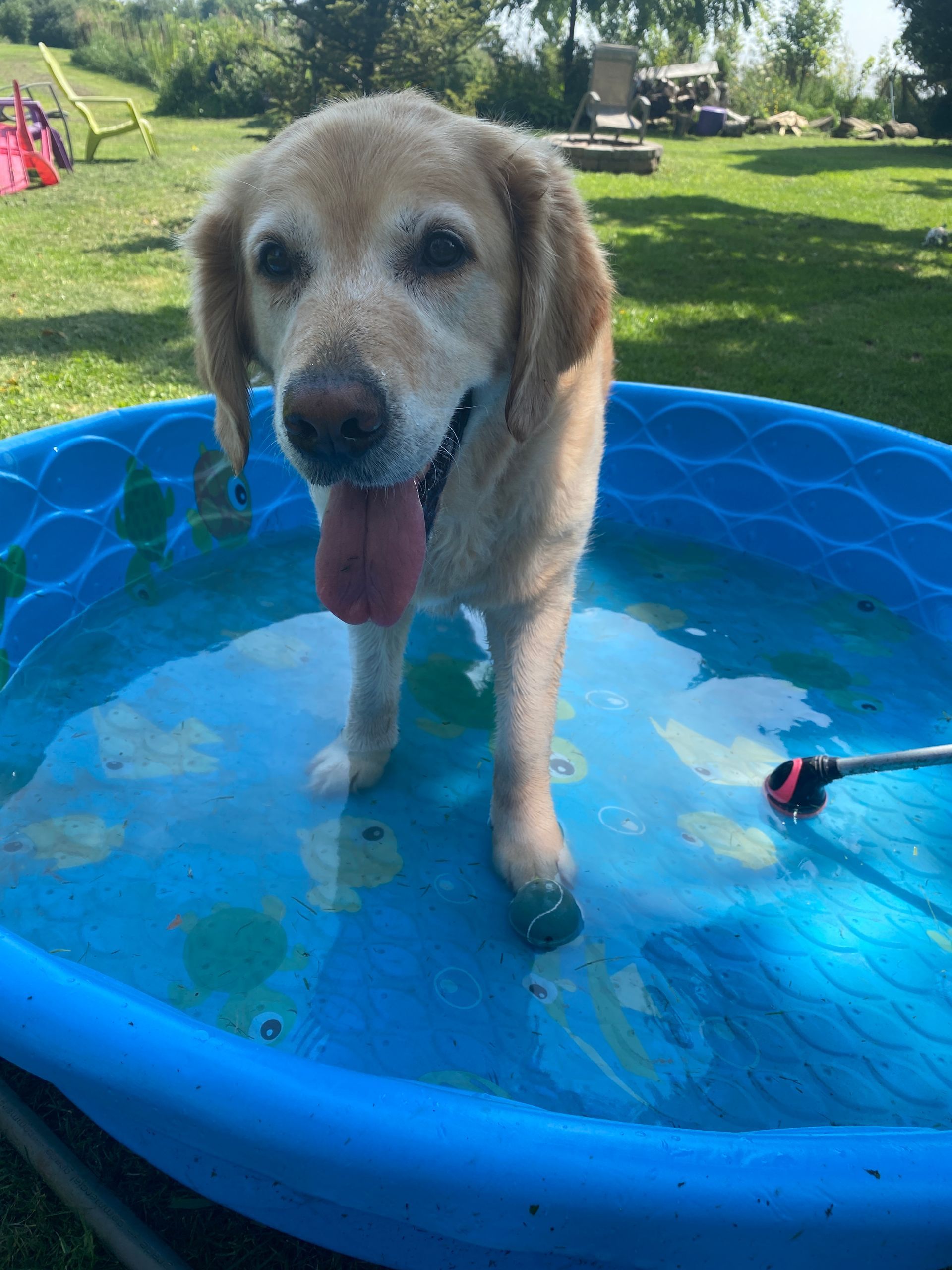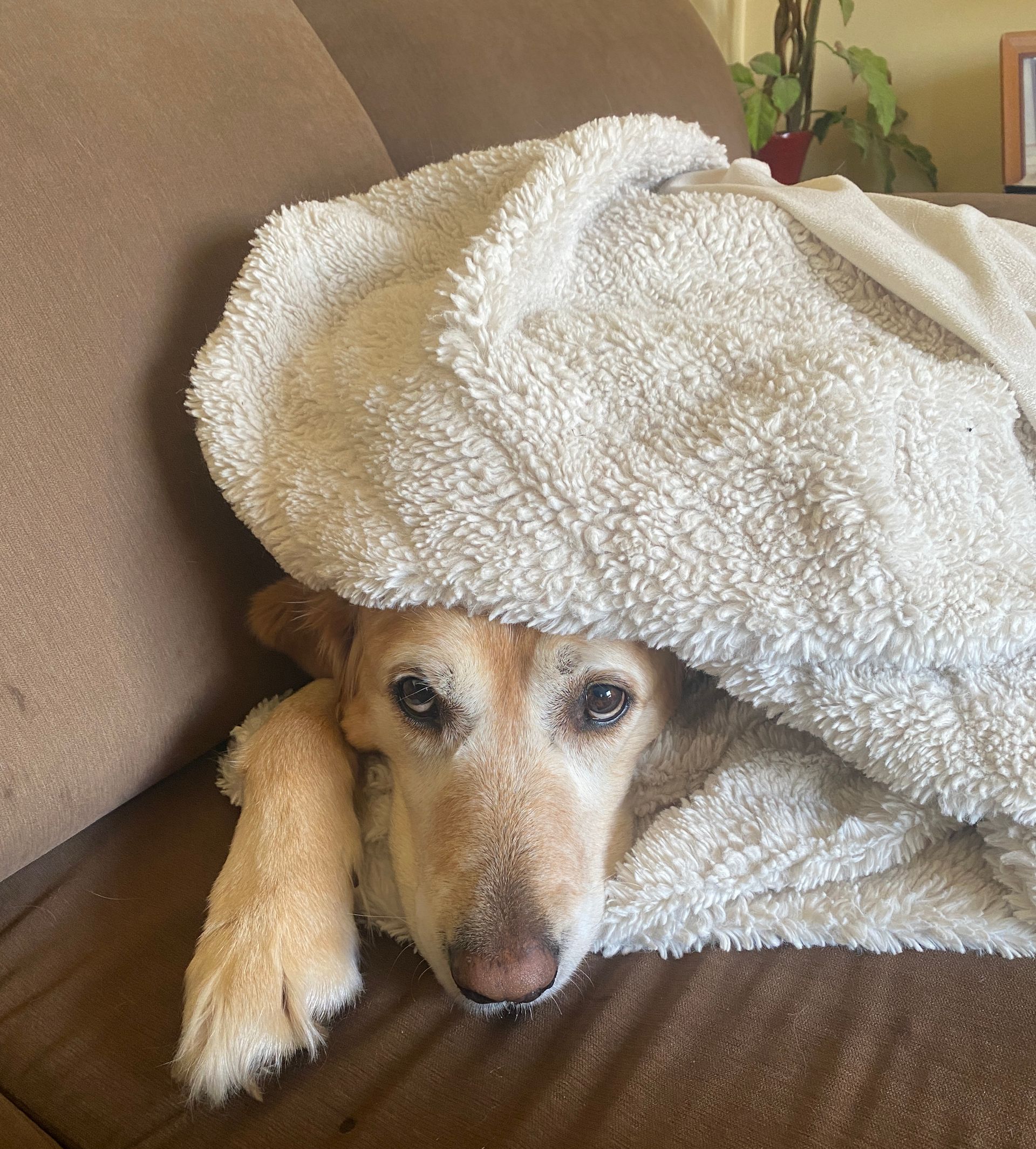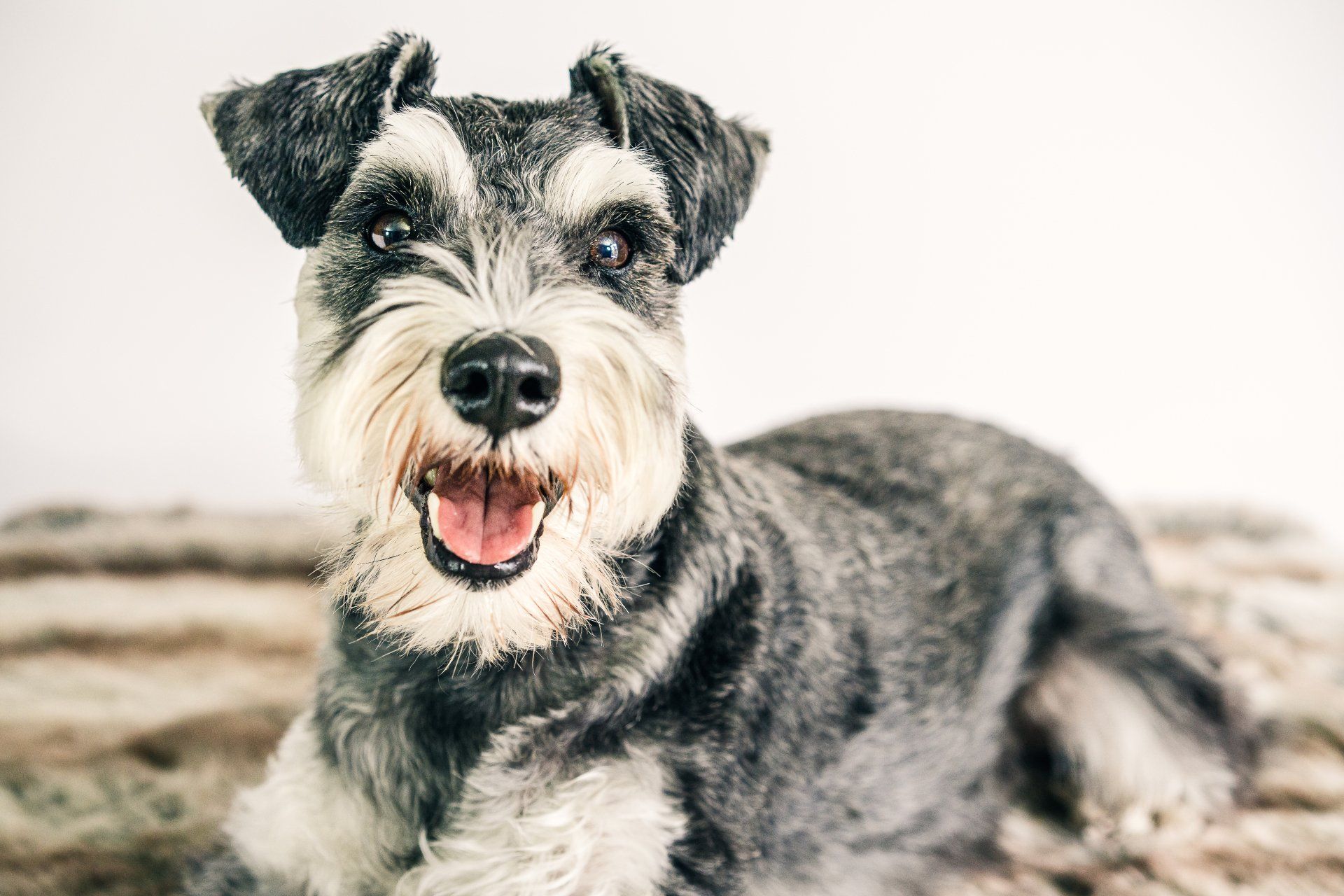Games 4 Dogs
Benefits & Drawbacks of a Second Dog
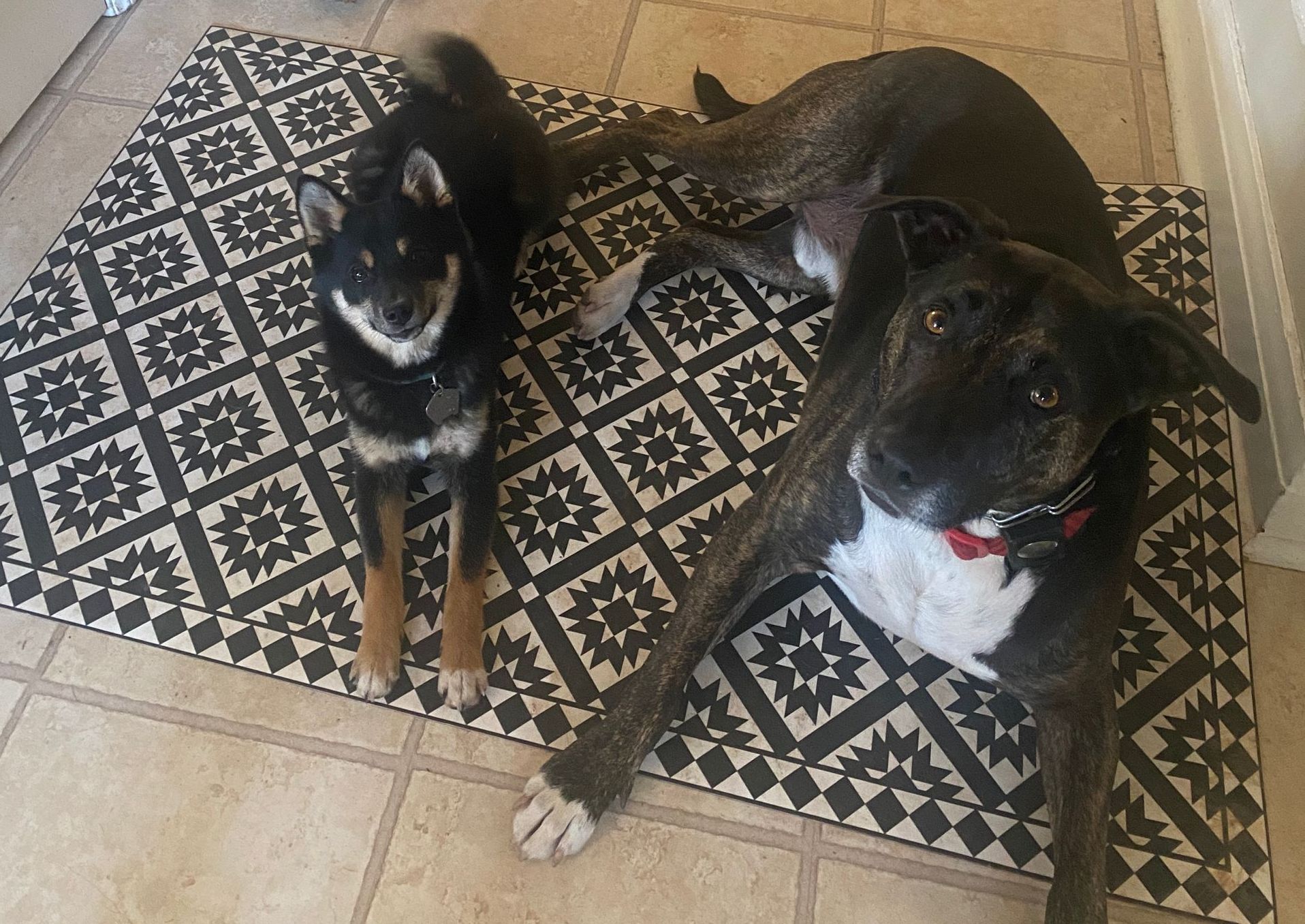
Having trained dogs professionally for a while now, I've had my fair share of folks asking for advice when they are considering getting a new puppy or adopting a rescue dog of any age. After guiding many through this scenario, I thought I’d create a guide to help others in a similar situation.
Before jumping into getting a second dog, there are some key things to consider:
· Compatibility: Take a good look at your current dog's energy levels and personality. Are they up for a playmate, especially one with a different energy level? Ensuring compatibility minimizes future conflicts.
· Current Dog's Behaviour: Make sure your existing dog is well-behaved. An untrained or aggressive dog can rub off on a new pup in all the wrong ways. Consider hiring a trainer to brush up on manners before adding to the pack.
· Space: Do you have enough room at home and in your yard for another dog? Both dogs need their space to move around comfortably.
· Time Commitment: Adding a second dog means more time for training, exercise, and cuddles. Make sure you're ready to dedicate time to both pups.
· Financial Responsibility: Another dog means extra expenses for food, vet visits, and more. Make sure your budget can handle it.
· Health and Age: Consider your current dog's health and age. A senior dog might not appreciate a hyper puppy, and a young pup might not be a great match for an older dog with health issues.
· Socialization: Is your dog friendly with others? Make sure they're well-socialized before bringing in a new buddy.
· Routine and Stability: Adding a new dog can shake up the household routine. Be prepared to help both dogs adjust and feel secure.
· Family Readiness: Everyone in the family needs to be on board with the idea of another dog and ready for the responsibilities that come with it.
· Slow Integration: Take your time introducing the new pup to your current dog. Start with neutral territory and closely monitor their interactions until they adjust.
Now that you have thought through the aforementioned considerations, let's break things down further. Taking these factors into account and investing in proper training can help pave the way for a conflict free multi-dog household.
Pros for Getting Another Dog
Getting another dog, whether it’s a puppy or a rescue, is an exciting concept. Here are some pros of adding another dog to your family:
· Companionship for Your Dog: Another dog can provide your current dog with a playmate and companion, reducing feelings of loneliness and boredom.
· Enhanced Exercise and Play: With a second dog, there’s often more playtime and physical activity, which can contribute to the overall health and well-being of both dogs.
· Socialization Opportunities: A new dog can help improve your current dog’s social skills and adaptability by providing regular interaction and engagement.
· Increased Security: Two dogs can provide added security to your home, as they may deter intruders more effectively than one.
· Emotional Support: Dogs are great for emotional support, and having another dog can double the emotional comfort and companionship you receive.
· Rescue and Adoption: By adopting another dog, you’re providing a loving home to an animal in need, which can be deeply rewarding.
· Family Bonding: The process of caring for and training a new dog can bring family members closer as they share the responsibilities and joys of pet ownership.
· Entertainment: Watching two dogs interact, play, and bond can be a source of great entertainment and joy for the household.
Cons for Getting Another Dog
While adding a second dog can bring many benefits, here are some cons of adding another dog to your family:
· Increased Financial Burden: Another dog means additional costs for food, veterinary care, grooming, and supplies, which can significantly impact your budget.
· Time and Attention: A second dog will require extra time for training, exercise, and care. Balancing the needs of both dogs can be challenging, especially if they have different activity levels or training requirements.
· Space Constraints: If your living space is limited, accommodating another dog might create a cramped environment, leading to stress for both the dogs and the human occupants.
· Potential Stress and Conflicts: Dogs may not always get along, leading to fights or dominance issues. Managing these conflicts requires careful supervision and sometimes professional intervention.
· Increased Noise and Activity: More dogs can mean more barking, playing, and overall activity, which might not be ideal in a quiet neighborhood or for people who prefer a calm environment.
· Emotional Adjustment: Your current dog might experience stress or anxiety with the introduction of a new pet. It can take time and effort to help both dogs adjust emotionally to the new dynamic.
· Travel and Logistics: Traveling or finding pet care for two dogs can be more complicated and expensive than for one, whether you're hiring a pet sitter or boarding them.
· Household Harmony: Ensuring that all family members are comfortable with and supportive of the new addition is important. Not everyone might be on board with the increased responsibilities.
How To Choose the Best Dog
Choosing the best dog for you and your family involves several important steps and considerations to ensure a good fit for your household. Here’s my suggestions to help you find the right dog:
1. Assess Your Lifestyle:
· Activity Level: Consider how active your family is. Some dogs need a lot of exercise (e.g., Border Collies, Labradors, Golden Retrievers), while others are more low-key (e.g., Bulldogs).
· Time Commitment: Think about how much time you can devote to training, exercise, and socializing your dog.
· Living Space: Evaluate your home environment. Larger, more active dogs may need more space, while smaller or less active breeds might be comfortable in apartments.
· Allergies: Consider hypoallergenic breeds if any family members have allergies.
2. Research Breeds:
· Temperament: Look for breeds known for temperaments that match your family’s needs (e.g., friendly and tolerant Labradors and Golden Retrievers are great for families with kids).
· Size: Consider the size of the dog and how it will fit into your living space and daily life. Is a small or large dog best? Think about the positives and negatives associated with each.
· Health Concerns: Research common health issues in different breeds to prepare for potential future medical needs.
3. Consider Age and Energy Level:
· Puppy vs. Rescue/Older Adult: Puppies require more time for training and socialization, whereas adult dogs might have some skills but also might have some behaviour challenges that require attention and retraining. Both may require some financial planning.
· Energy Level: Match the dog’s energy level with your family’s lifestyle. High-energy dogs need more exercise and stimulation. Quiet families might be best suited to lower energy breeds.
4. Adoption vs. Breeder:
· Adopting: Visit shelters and rescues where you can find mixed breeds and older dogs in need of homes. Many shelter dogs are evaluated for temperament and behavior. Ask about a trial period, some shelters and breeders offer trial periods where you can take the dog home temporarily to see how it fits with your family before making a final commitment.
· Breeder: If you’re looking for a specific breed, find a reputable breeder. Look for breeders who prioritize health and temperament and are willing to let you meet the puppy’s parents.
· Meet and Greet: Spend time with potential dogs to observe their behavior and how they interact with your current family. Look for a dog that is friendly, confident, and responsive. Observe how the dog reacts to different family members and situations to ensure a good match.
Should I Get Two Male Dogs?
Getting two male dogs can work well, but it comes with specific considerations. Here are the pros and cons:
Pros of Getting Two Male Dogs:
· Reduced Risk of Unplanned Litters: With two males, there's no risk of unwanted puppies.
· Similar Play Styles: Male dogs often have similar energy levels and play styles, which can lead to compatible play and bonding.
Cons of Getting Two Male Dogs:
· Territorial and Dominance Issues: Male dogs can be more territorial and may display dominance behaviours, especially if they are not neutered. This can lead to conflicts and problems.
· Size and Strength: If both males are large and strong, handling them can be more challenging, especially if they are not well-trained.
· Behavioural Synchronization: If one male develops a behavioral issue, the other might mimic it, making it harder to manage and correct.
Should I Get Two Female Dogs?
Getting two female dogs can work well, but like with any pairing, it comes with specific considerations. Here are the pros and cons:
Pros of Getting Two Female Dogs:
· Reduced Risk of Unplanned Litters: With two females, there's no risk of unwanted pregnancies, eliminating the need for stringent reproductive management.
· Less Territorial Marking: Female dogs typically mark their territory less frequently than males, potentially resulting in fewer issues related to territorial marking.
· Play Compatibility: Female dogs often have compatible play styles and energy levels, which can foster positive interactions and bonding.
· Maternal Instincts: Females may display nurturing behavior toward each other, leading to a strong bond and cooperative relationship.
Cons of Getting Two Female Dogs:
· Behavioural Issues During Heat: If both females are not spayed, they will go through heat cycles, which can lead to behavioural changes, irritability, and potential aggression.
· Size and Strength: If both females are large and strong, managing them can be more challenging, especially if they are not well-trained.
Can having more than one dog help with separation anxiety?
Having more than one dog can help with separation anxiety, but it's not a guaranteed solution and depends on various factors. While a second dog can help, you should be aware that it might not eliminate separation anxiety. In my experience, reducing the chances of your dog developing separation anxiety involves implementing several training interventions:
Training Interventions to Prevent Separation Anxiety:
Gradual Departures and Arrivals:
· Desensitization: Make leaving and coming home low-key events. Avoid long goodbyes and overly enthusiastic greetings to prevent your dog from becoming overly excited or anxious.
· Practice Departures: Start by leaving for short periods, gradually increasing the time you are away to help your dog get used to being alone.
Establish a Routine:
· Consistent Schedule: Maintain a consistent daily routine for feeding, walks, and playtime. Predictability helps reduce anxiety.
· Calm Environment: Create a calm and relaxing environment for your dog with a comfortable bed and familiar toys.
Independence Training/Alone Time:
· Alone Time: Encourage your dog to spend time alone in a safe space, like a crate or a designated room, even when you are at home. Start with short periods and gradually increase the time.
· Self-Soothing: Provide your dog with chew toys or puzzle toys that can keep them occupied and help them self-soothe when you’re not around.
Positive Associations:
· Treats and Toys: Give your dog a special treat or toy that they only get when you leave. This creates a positive association with your departure.
· Background Noise: Leave a TV or radio on to provide background noise and make your absence less noticeable.
Exercise and Mental Stimulation:
· Regular Exercise: Ensure your dog gets plenty of physical exercise through walks, playtime, and other activities. A tired dog is less likely to be anxious.
· Mental Stimulation: Provide puzzle toys, training sessions, and interactive games to keep your dog mentally engaged.
Crate Training:
· Safe Space: If your dog is comfortable with crate training, use the crate as a safe and secure space for them when you are away. Ensure the crate is associated with positive experiences and never used as punishment.
By incorporating these training interventions, you can help your dog become more comfortable with being alone, reducing the risk of developing separation anxiety and promoting their overall well-being.
If you choose to get a second dog, I hope you will use this guide to create a plan for success. Helping dogs learn how to get along involves introducing them slowly in a neutral space to avoid conflicts. Spend time training and socializing them so they learn to be friends, and make sure to give them equal attention and care to keep things fair. If any issues come up, don’t hesitate to reach out to me through this website, or phone call for some extra help. With a bit of effort, I know you can create a happy, peaceful home for both your pups.




